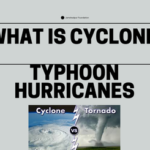Heatwaves; death and wet bulb temperature: Basics Explained

Heatwaves; death and wet bulb temperature: Basics Explained
In the last three days, due to exposure to intense heat, dozens of people have died in at least three states — Uttar Pradesh, Bihar, and Odisha —doctors in these regions have said, with weather officials separately warning that severe heatwaves will continue in many parts of the country.
LEARNING FROM HOME/ WITHOUT CLASSES/ BASICS
Air temperatures, as forecasts by weather stations, are what meteorologists call dry-bulb temperatures. But there is also a term called wet-bulb temperatures(WBT). Higher wet-bulb temperatures have become more common over the last few decades, with some communities sometimes, temporarily, reaching intolerable levels.
Heatwaves during summer, when it comes to the impact of high temperatures on humans does not factor in humidity which plays a huge role in how we actually experience heat.
Wet-bulb temperatures take into consideration air temperature, humidity, wind speed, sun angle and cloud cover. That’s a way of assessing heat stress in direct sunlight. Threshold” or “critical” WBT for humans, the point at which a healthy person could survive for only six hours is usually considered to be 35C.
The term comes from how it is measured. If you slide a wet cloth over the bulb of a thermometer, the evaporating water from the cloth will cool the thermometer down. This lower temperature is the WBT, which cannot go above the dry temperature. If humidity in the surrounding air is high, however – meaning the air is already more saturated with water – less evaporation will occur, so the WBT will be closer to the dry temperature.
Wet-bulb temperatures are cooler than dry-bulb temperatures. The evaporating water drops the temperature a bit, just as how your own body temperature drops when you sweat to cool down. In lower humidity – or air that holds less water – water evaporates faster, dropping the temperature more quickly.
When the humidity is 100% (imagine a steamy summer day), the air is saturated. Evaporation can’t happen in 100% humidity. Only in 100% humidity will the dry-bulb and wet-bulb temperatures read the same. Humans can survive in fairly high temperatures as long as the air is dry. If you can’t sweat to cool yourself, you eventually get heat stroke. The wet-bulb temperature is a measure of heat that considers multiple factors. It’s a good indicator of temperatures that are too dangerous to work in.
HEATWAVE
Qualitatively, heatwave is a condition of air temperature which becomes fatal to human body when exposed. Quantitatively, it is defined based on the temperature thresholds over a region in terms of actual temperature or its departure from normal. The Indian Meteorological Department (IMD) has given the following criteria for Heat Waves :
Heat Wave need not be considered till the maximum temperature of a
station reaches at least 40°C for Plains and at least 30°C for Hilly
regions
An orange alert is issued when a heatwave is likely to persist for more than four days or a severe heatwave for more than two days.
There are two criteria for a heatwave — when the maximum
temperature is at least 40°C and between 4.5°C and 6.4°C higher than the normal; or when maximum temperature is over 45°C for two stations in a sub-division for two consecutive days.
A severe heatwave is declared when maximum temperature is at least 40°C and more than 6.4°C higher than the normal; or when the maximum temperature is more than 47°C.
IMD issues warnings in colour code,Green,Yellow,Orange and Red as
per the conditions of Heat wave conditions prevailing in the Country.
|
WARNING |
IMPACT |
SUGGESTED ACTION |
|
Nil |
Comfortable Temperature |
No cautionary required |
|
Heat wave conditions at |
Heat is tolerable for |
Avoid heat exposure |
|
Severe heat wave conditions |
Increased likelihood of heat |
Avoid heat exposure– keep |
|
Severe heat wave likely to |
Very high likelihood of |
Extreme care needed for |
INDIA METEOROLOGICAL DEPARTMENT works under the Ministry of Earth
Sciences.
In the year 1875, the Government of India established the India Meteorological Department, bringing all meteorological work in the country under a central authority. Mr. H. F. Blanford was appointed Meteorological Reporter to the Government of India. The first Director General of Observatories was Sir John Eliot who was appointed in May 1889 at Calcutta headquarters. The headquarters of IMD were later shifted to Shimla, then to Poona (now Pune) and finally to New Delhi.Dr. Mrutyunjay Mohapatra is the current Director General of Meteorology.




0 Comments